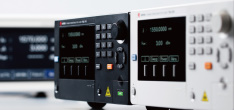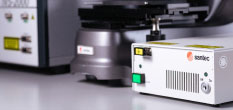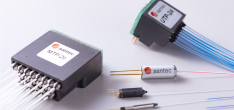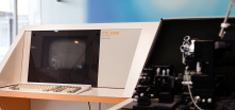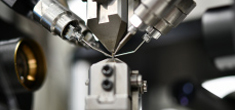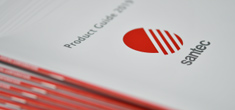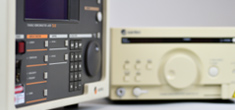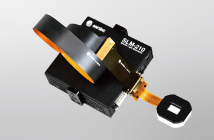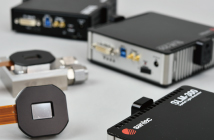Take Control of Light
High-Power Spatial Light Modulator (1 kW Power Handling)
SLM-310 Preliminary
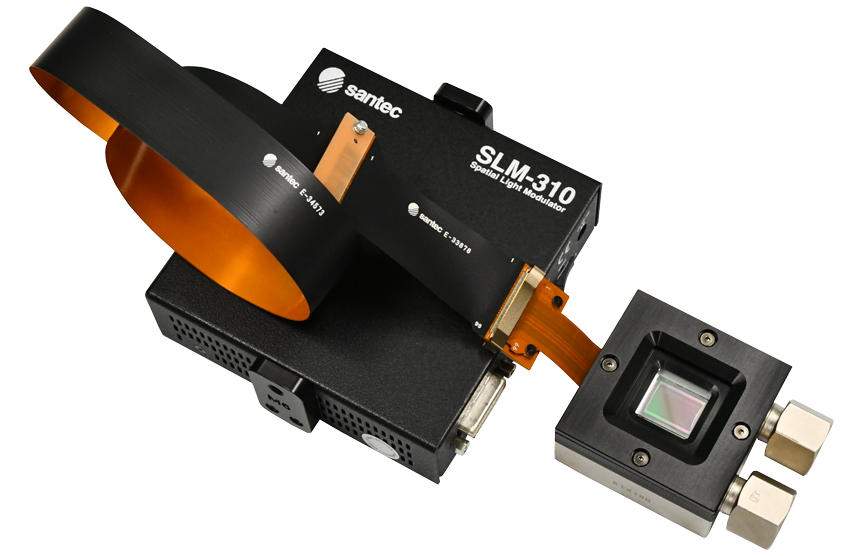
SLM-310 is an LCOS-based spatial light modulator designed for high laser power durability, supporting 1 kW near-infrared lasers at 1064 nm. It features a high resolution of WUXGA (1920×1200) and exceptional phase stability with a representative value below 0.003π, enabling precise beam control with 10bit (1024 grayscale levels) modulation. Equipped with a robust water-cooling system, the SLM-310 can be integrated into laser processing equipment for welding, drilling, cutting, and metal 3D printing. It contributes to improved processing accuracy, minimized thermal effects, efficient beam shaping, steering correction, and multi-beam control.
Features
- Laser Power Durability: Up to 1 kW
- Wavelength: 1020–1100 nm
- Stable Operation with Water-Cooling System
- Phase Stability: < 0.003π (typical)
- Gray Level: 10bit (1024 Levels)
- Resolution: WUXGA (1920×1200)
- Built-in Memory and I/O Trigger Functions
- Extended Flexible Cable for Versatile Installation
- Extended SDK with example codes based on C#, MATLAB, Python, LabVIEW, etc
- Prompt and professional technical support, for supporting you to test and integrate the product to your project
Application
- Laser Material Processing, including welding, cutting, drilling, Chamfering, Film removing, surface treatment, etc
- Metal 3D Printing, Additive Manufacturing
- Wafer cutting, Dicing
- Wavefront Correction
- Pulse Shaping and Beam Shaping
Expected Benefits of Spatial Light Modulators in Metal Processing
Spatial light modulators enable dynamic control of the beam profile, allowing for highly precise processing. In the fabrication of fine structures and complex metal components, the SLM-310 delivers a level of precision that is difficult to achieve with traditional methods, ensuring consistent production of high-quality parts.
The SLM-310 allows for instantaneous adjustment of laser irradiation patterns, significantly reducing processing time. Techniques such as using donut- or ring-shaped beams can enhance speed while minimizing unnecessary thermal input, resulting in improved processing efficiency.
The SLM can split a single laser beam into multiple points and apply distinct patterns simultaneously, enabling the processing of several areas at once. This processing capability shortens takt time and greatly boosts overall productivity.
By precisely controlling laser energy distribution, the SLM-310 concentrates heat only where needed. This targeted energy delivery reduces spatter, improves quality, and mitigates the need for post-processing. It also helps preserve the integrity of temperature-sensitive materials.
News Release
Specifications
| Item | min. | max. | Units | Notes |
|---|---|---|---|---|
|
Wavelength |
1020-1100 |
nm | ||
| Panel Size | (H) 15.36 x (V) 9.60 | mm | Active area | |
| Pixel Resolution 1) | (H) 1920 x (V) 1200 | pixel | ||
| Pixel Size / Pitch | 7.8 / 8.0 | μm | ||
| Panel Reflectivity 2) | Typ. > 92 | % | ||
| Aperture Ratio | 95 | % | ||
| Gray Level | 10 (1024) | bit | ||
| Frame Rate | 60 or 120 | Hz | Factory setting, default 60 Hz | |
| LCOS Drive Frequency | 1200 | Hz | ||
| Phase Depth | 2π | - | rad. | |
| Phase Stability | Typ. < 0.003π | rad. | ||
| Response Time 3) |
Tr: 250 / Tf: 350 |
ms | ||
| Interface | DVI* / USB 3.0 | - | *10-bit using RGB 8-bit, 3 colors | |
| Operating Temperature Range | 15 | 35 |
℃ |
No condensation |
| Storage Temperature | 0 | 40 |
℃ |
No condensation |
| Optical Power Handling 4) | - | 1000 | W |
CW @1070 nm, 6.5 mm beam diameter |
| Dimensions | 117.6 x 117.6 x 33.7 | mm | ||
| Control software | GUI software and SDK for Windows | - | ||
| Water Flow | 8 | L/min. | 15 - 25℃ | |
| Water Inlet and Outlet | Pipe fittings | - | Rc(PT) 3/8 inch female 5) | |
1) Pixel defects are not warranted.
2) Zero-order reflection.
Depending on wavelength range.
3) Response time is a typical value and is not affected by frame rate.
Tr: Rise time between 10% and 90% levels in a phase change of 0 to 1023 bit (2π rad.) at 25℃.
Tf: Fall time between 90% and 10% levels in a phase change of 1023 to 0 bit (2π rad.) at 25℃.
4) The value is not guaranteed.Depending on the conditions of the laser oscillator used,
the product's life may be significantly shortened due to accumulated exposure time.
5) Supports NPT standard using attached conversion adapters.
Application
■Laser Welding Simulation
This simulation demonstrates the effectiveness of laser welding through precise beam profile control. By optimizing the beam intensity distribution, several improvements in welding quality and productivity can be expected, including (1) reduced spatter droplets, (2) fewer bubbles and voids within the weld, (3) minimized weld marks, and (4) increased welding speed.
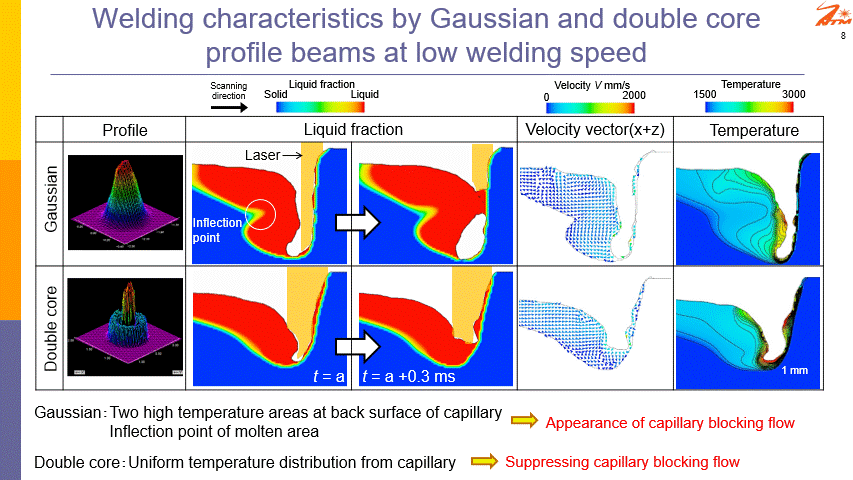
Video Provided
Okayama University
Dep.of Mechanical Eng.
Nontraditional Machining Laboratory
Dr. Yasuhiro.Okamoto
Video
Download
Catalog
Comparison Tables for Spatial Light Modulator (English)
Sofware
- GUI Software
- SLM Pattern Generator Installer
- SLM SDK for Windows
Papers
Dynamically patterning x-ray beam by a femtosecond optical laser
Published on: November 2024
Authors: Kenji Tamasaku, Takahiro Sato, Taito Osaka, Hitoshi Osawa, Diling Zhu, Tetsuya Ishikawa.
Publication: Science Advances
Issue/Year: Science Advances, Vol 10, Issue 47, 2024
DOI: 10.1126/sciadv.adp5326
Scan-less hyperspectral dual-comb single-pixel-imaging in both amplitude and phase
Published on: September 2017
Authors: Kyuki Shibuya, Takeo Minamikawa, Yasuhiro Mizutani, Hirotsugu Yamamoto, Kaoru Minoshima, Takeshi Yasui, and Tetsuo Iwata
Publication: Optics Express
Issue/Year: Optics Express Vol. 25, Issue 18, pp. 21947-21957 (2017)
DOI: 10.1364/OE.25.021947
Multiwavelength three-dimensional microscopy with spatially incoherent light, based on computational coherent superposition
Published on: May 2020
Authors: Tatsuki Tahara, Tomoyoshi Ito, Yasuyuki Ichihashi, and Ryutaro Oi
Publication:Optics Letters
Issue/Year: Optics Letters Vol. 45, Issue 9, pp. 2482-2485 (2020)
DOI: 10.1364/OL.386264
Quantum Airy photons
Published on: August 2018
Authors: Stephanie Maruca, Santosh Kumar, Yong Meng Sua, Jia-Yang Chen, Amin Shahverdi and Yu-Ping Huang
Publication: Journal of Physics B
Issue/Year: Journal of Physics B: Atomic, Molecular and Optical Physics, Volume 51, Number 17
DOI: 10.1088/1361-6455/aacac5
Spatial mode demultiplexing technique using angularly multiplexed volume holograms with a phase plate
Published on: August 2017
Authors: Shimpei Shimizu, Atsushi Okamoto, Fumiya Mizukawa, Kazuhisa Ogawa, Akihisa Tomita, Taketoshi Takahata, Satoshi Shinada and Naoya Wada
Publication: Japanese Journal of Applied Physics
Issue/Year: 2017 The Japan Society of Applied Physics Japanese Journal of Applied Physics, Volume 56, Number 9S
DOI: 10.7567/JJAP.56.09NA05
Orbital Angular Momentum-based Space Division Multiplexing for High-capacity Underwater Optical Communications
Published on:September 2016
Authors: Yongxiong Ren, Long Li, Zhe Wang, Seyedeh Mahsa Kamali, Ehsan Arbabi, Amir Arbabi, Zhe Zhao, Guodong Xie, Yinwen Cao, Nisar Ahmed, Yan Yan, Cong Liu, Asher J Willner, Solyman Ashrafi, Moshe Tur, Andrei Faraon, Alan E Willner
Publication: Scientific Reports
Issue/Year: Sci Rep. 2016 Sep 12;6:33306.
DOI: 10.1038/srep33306
Dynamic characterization of polarization property in liquid-crystal-on-silicon spatial light modulator using dual-comb spectroscopic polarimetry
Published on: August 2020
Authors: Hidenori Koresawa, Marc Gouryeb, Kyuki Shibuya, Takahiko Mizuno, Eiji Hase, Yu Tokizane, Ryo Oe, Takeo Minamikawa, and Takeshi Yasui
Publication: Optics Express
Issue/Year: Optics Express Vol. 28, Issue 16, pp. 23584-23593 (2020)
DOI: 10.1364/OE.399200
Holographic ultraviolet nanosecond laser processing using adaptive optics
Published on:March 2023
Authors: Satoshi Hasegawa, Mizuki Kato & Yoshio Hayasaki
Publication: Applied Physics B
Issue/Year: Appl. Phys. B 129, 52 (2023)
DOI: 10.1007/s00340-023-07993-1
Spatial Light Modulators Help Quantum Computer Research
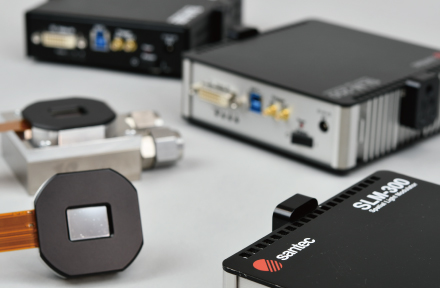
At CLEO 2022 (the Conference on Lasers and Electro-Optics), six of MIT researchers presented papers on quantum computers using Santec's spatial light modulators.
FAQ
Q.Is it possible to specify the frame rate for LCOS-SLM?
Yes, please select 60Hz/120Hz when ordering.
(You cannot switch frame rates after purchase.)
Related Articles
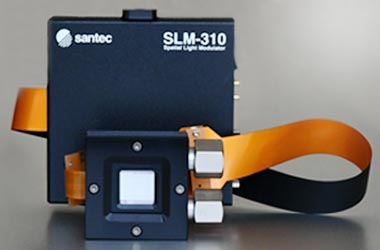
DEVELOPER INTERVIEW
LCOS Spatial Light Modulator for 1 kW Laser Beam Shaping — Insights from the Developers
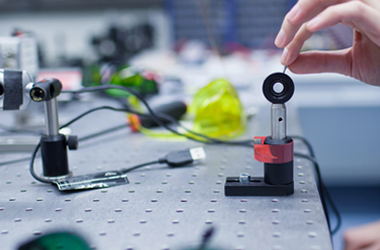
FELLOWSHIP
Complimentary Spatial Light Modulator for Your Research
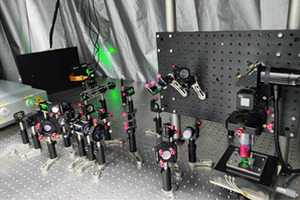
CASE STUDY
Customer Feedback on Spatial Light Modulators

WEBINAR
Archived Webinar on Spatial Light Modulators
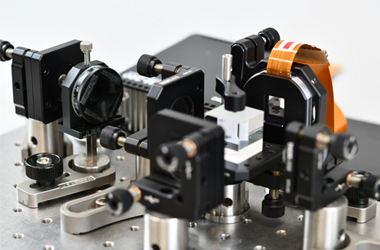
BLOG
What is a Spatial Light Modulator?
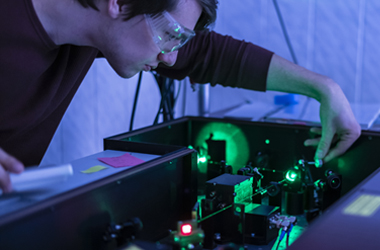
BLOG
Applications of Spatial Light Modulators

BLOG
How to Select Spatial Light Modulators and Necessary Characteristics
